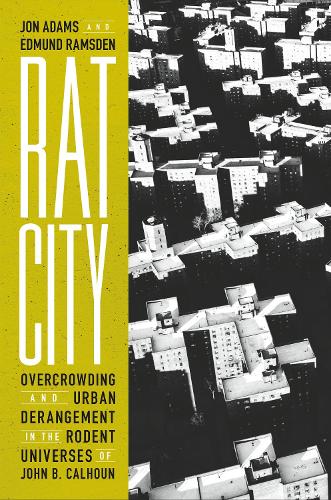
Rat City: Overcrowding and Urban Derangement in the Rodent Universes of John B. Calhoun
(Hardback)
Publishing Details
Rat City: Overcrowding and Urban Derangement in the Rodent Universes of John B. Calhoun
By (Author) Jon Adams
By (author) Edmund Ramsden
Melville House Publishing
Melville House Publishing
13th August 2024
18th July 2024
United States
Classifications
General
Non Fiction
B
Physical Properties
Hardback
384
Width 160mm, Height 238mm
567g
Description
How one experiment in rat behavior effected the re-making of society in the post-WWII boom years. How did the famous rat experiments of John B. Calhoun come to influence the thought behind social design, understandings of urban decay and regeneration, city planning as social control, and ultimately around the malleability of human nature. In 1947, ecologist John B. Calhoun came from the backwoods of Tennessee to the back-alleys of Baltimore. The city had hired him to kill rats. But to understand how to kill rats, he first had to learn how they lived. Over the next 3 decades, Calhoun built a series of experimental "Rat Cities" to observe his rodents, and subsequently to test their tolerance of population density. As the Rat Cities became ever more crowded, their residents began to exhibit increasingly severe reactions to social stress- Mothers neglected their youngMales became violent and hyper-sexualOthers withdrew into complete social isolation, grooming obsessively and feeding alone Unable to reproduce, the populations dwindled to extinction in what Calhoun called "a behavioral sink." As rising crime and social disorder swept through 1960s America, the Rat Cities predicted a bleak future for an increasingly crowded planet. Though they're markers of urban decay, this book illustrates that rats can be the catalyst for positive social change. In a mix of weird, dystopian science and bleak urbanist social history, this is the strange story of how an attempt to eliminate inner city rats became a symbol for how to understand human nature. A photo insert will be included.
Author Bio
Edmund Ramsden is an historian of science at Queen Mary University of London, with an interest in the history of the social, behavioral and biological sciences in the 20th century. Jon Adams is a former BBC New Generation Thinker and author of Interference Patterns- Literary Study, Scientific Knowledge, and Disciplinary Autonomy. They both previously worked at the London School of Economics, where they began collaborating on the history and influence of John B. Calhoun's rodent crowding experiments.
